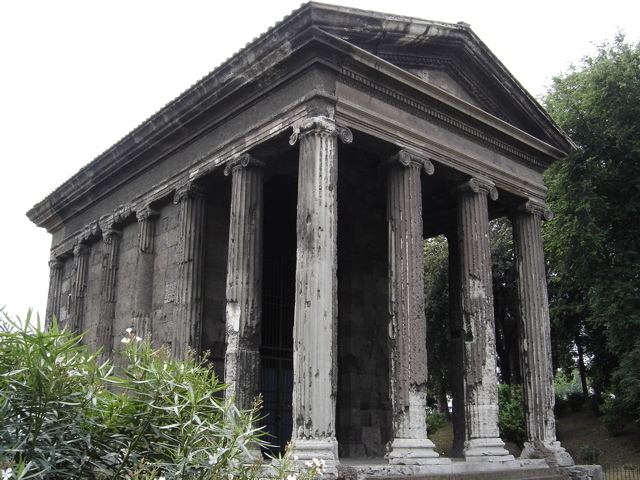 | ||
Architectural style Ancient Roman architecture Similar Temple of Hercules Victor, Forum Boarium, Temple of Vesta, Theatre of Marcellus, Santa Maria in Cosmedin | ||
Temple of portunus
The Temple of Portunus (Italian: Tempio di Portuno) or Temple of Fortuna Virilis ("manly fortune") is a Roman temple in Rome, one of the best preserved of all Roman temples. Its dedication remains unclear, as ancient sources mention several temples in this area of Rome, without saying enough to make it clear which this is. It was called the Temple of Fortuna Virilis from the Renaissance, and remains better known by this name. If dedicated to Portunus, god of keys, doors and livestock, and so granaries, it is the main temple dedicated to the god in the city.
Contents
It is in the Ionic order and located by the ancient Forum Boarium by the Tiber, during Antiquity the site overlooked the Port Tiberinus at a sharp bend in the river; from here, Portunus watched over cattle-barges as they entered the city from Ostia.
The temple was originally built in the third or fourth century BC but was rebuilt between 120-80 BC, the rectangular building consists of a tetrastyle portico and cella, raised on a high podium reached by a flight of steps, which it retains. Like the Maison Carrée in Nîmes, it has a pronaos portico of four Ionic columns across and two columns deep. The columns of the portico are free-standing, while the remaining five columns on the long sides and the four columns at the rear are half-columns engaged along the walls of the cella. This form is sometimes called pseudoperipteral, as distinct from a true peripteral temple like the Parthenon entirely surrounded by free-standing columns. The Ionic capitals are of the original form, different in the frontal and side views, except in the volutes at the corners, which project at 45°, a common Roman detail. It is built of tuff and travertine with a stucco surface.
The temple owes its state of preservation to its being converted for use as a church in 872 and rededicated to Santa Maria Egyziaca (Saint Mary of Egypt). Its Ionic order has been much admired, drawn and engraved and copied since the 16th century (see illustration, right). The original coating of stucco over its tufa and travertine construction has been lost.
The circular Temple of Hercules Victor is located south-east of the temple in the Forum Boarium.
The 18th-century Temple of Harmony in Somerset, England is a folly based on the Temple of Portunus.
